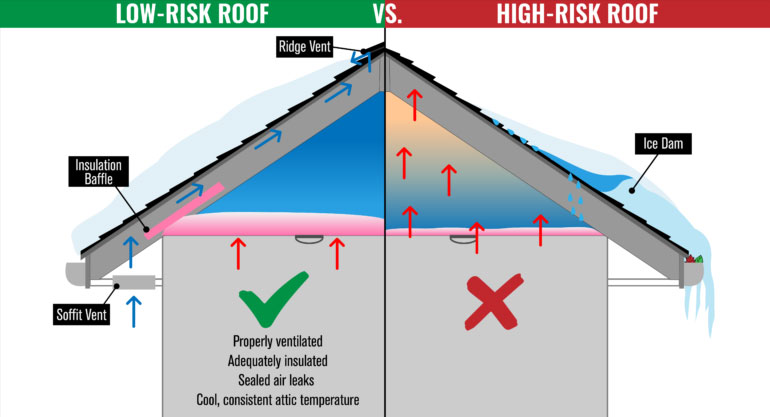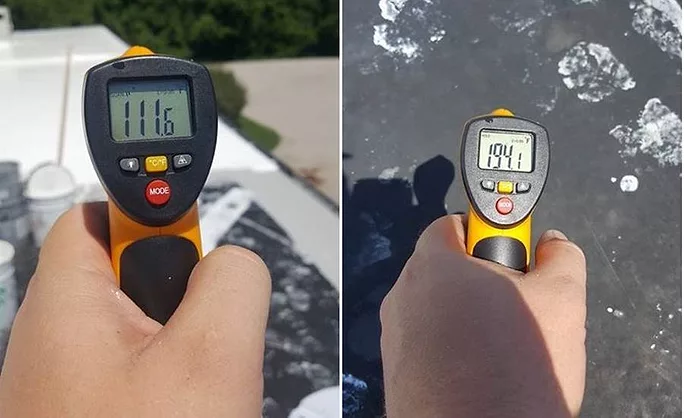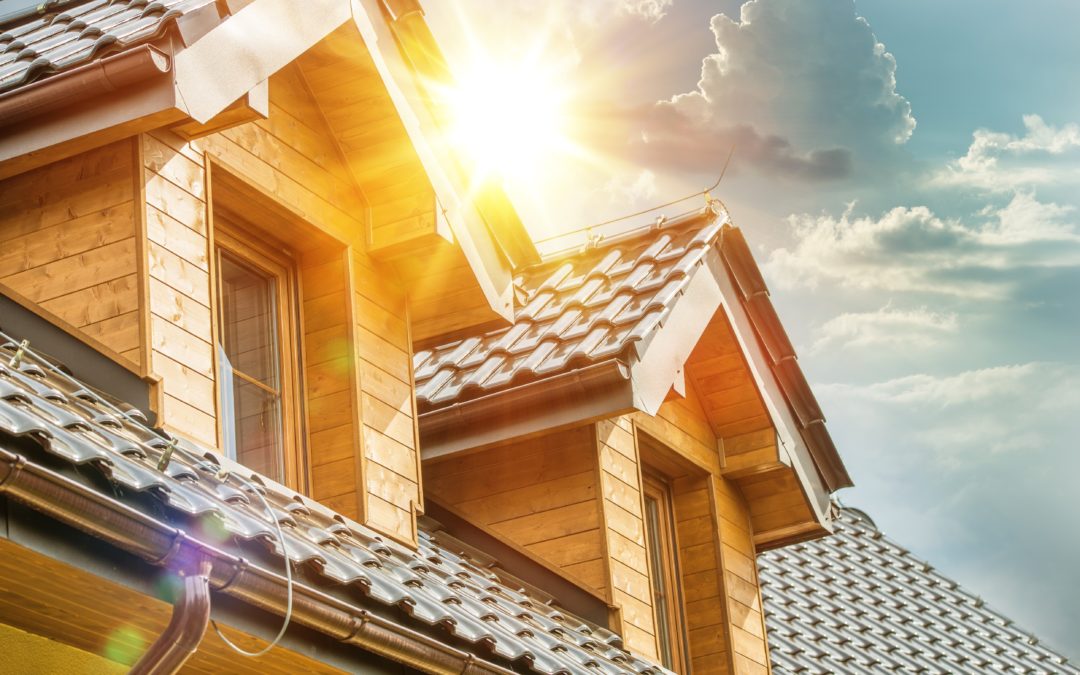Your roof is one of the most important parts of your home, protecting your family and belongings from the elements. In Pennsylvania, where weather ranges from hot summers to snowy winters, monitoring roof temperature is crucial. It helps identify problems early, improves energy efficiency, and prevents costly damage. At Roof Repair Lancaster PA, we offer expert guidance and reliable roofing services to keep your home safe year-round.
Understanding Roof Temperature and Its Impacts
Roof temperature affects the overall energy efficiency of your home. High temperatures can cause roofing materials, including shingles and metal roof panels, to deteriorate faster, potentially leading to leaks or water damage. On the other hand, uneven temperatures can indicate poor insulation or ventilation issues, which increase energy costs and contribute to structural damage over time.

Common Methods to Measure Roof Temperature
Here are some common and effective methods used to measure roof temperature:
- Infrared Thermography and Thermal Imaging: This is the most popular method among professional roofing contractors. Thermal cameras detect heat patterns across the entire roof surface, highlighting hot spots caused by poor insulation or damaged materials.
- Digital Thermometers and Sensors: These tools measure specific points on the roof. While less comprehensive than thermal imaging, they provide quick spot checks for temperature irregularities.
- Heat Flow Meters and Pyranometers: These instruments measure heat transfer through roofing layers and quantify solar radiation’s effect on the roof’s temperature.
- Emerging Technologies: Drones equipped with thermal imaging help conduct fast, safe, and detailed inspections, particularly for large or hard-to-access commercial roofs or complex roof types.
Tools for Measuring Roof Temperature
Depending on your budget and needs, tools range from handheld infrared thermometers for DIY spot checks to advanced thermal cameras used by professionals like Roof Repair Lancaster PA. Thermal imaging provides a detailed visual, while sensors can be installed for long-term monitoring.
Step-by-Step Guide to Measuring Roof Temperature
Follow these simple steps to accurately measure roof temperature:
- Choose the right time: Preferably late morning on a sunny day with stable weather conditions and no wind.
- Prep your roof: Remove debris and ensure the surface is dry.
- Select measurement points: Include various spots—sun-exposed, shaded areas, near vents, gutters, and different roofing materials.
- Use your chosen tool: For thermal cameras, scan the entire roof size for heat patterns. For handheld devices, take note of spot temperatures.
- Record and analyze: Look for temperature discrepancies; hot spots may indicate missing insulation or damaged shingles.
Optimal Conditions and Placement Considerations
The accuracy of temperature readings depends on sensor placement and roof material. For example, metal roofs heat up and cool down faster than asphalt shingles. Installing sensors about 2.5–3 meters above the roof surface reduces environmental interference like wind or direct solar radiation. Flat roofs and roof types with reflective surfaces may require specific calibration to get reliable data.
Why Roof Temperature Measurement is Important for Pennsylvania Roofing
Pennsylvania roofing materials must withstand diverse weather events including snow, rain, and heat. Elevated roof temperatures can lead to thermal expansion causing missing shingles or cracks, while cold spots can indicate moisture accumulation leading to mold growth or structural damage. Timely temperature checks enable roofing contractors to recommend appropriate repairs or roof replacement before costly issues arise.
Roof Temperature and Emergency Roof Services
In severe weather events, your roof may suffer damage like fallen trees or storm damage, causing leaks or structural issues. Immediate emergency roof tarping services and emergency roof tarping services in Pennsylvania can provide a temporary solution using durable roof tarp materials to protect your building until repairs can be done. Accurate temperature and damage assessment also help in filing insurance claims for storm damage repair.
How Roof Repair Lancaster PA Can Help You
Our experienced team at Roof Repair Lancaster PA specializes in:
- Comprehensive roof inspection and thermal assessment to detect underlying issues.
- Emergency services including emergency roof tarping, repair of leaks, and securing of damaged roofing materials.
- Professional roof repair and installation, including metal roof and shingle replacement.
- Providing a free roof inspection and free estimate to guide your repair or replacement decisions.
We understand local requirements for roofing, including the need for a building permit, and provide transparent information on labor costs, roofing materials used, and the typical repair process to ensure you get high-quality workmanship with lasting results.
Analyzing and Using Roof Temperature Data
Temperature data can reveal:
- Areas requiring minor repairs to prevent roof leaks or mold growth.
- Spots prone to structural issues due to thermal stress.
- Opportunities to improve roof insulation and ventilation, lowering energy costs.
- When emergency roof tarping services or permanent repairs are needed after storms or severe weather events.
Having this data helps you decide when to schedule inspections or plan a roof replacement to avoid damage to the structure or interior.
Tips for Homeowners in Pennsylvania
- Perform regular inspections to monitor roof conditions.
- After storm damage, use emergency roof tarping services in Pennsylvania to temporarily protect your roof with quality roof tarp material.
- Always hire a licensed and experienced Pennsylvania roofer to perform temperature assessments and repairs.
- Combine temperature measurements with a visual free roof inspection from trusted companies like Roof Repair Lancaster PA.
- Understand local requirements and the need for building permits before installing new sensors or making significant repairs.

Conclusion
Measuring your roof temperature is an important step in maintaining your roof’s health and maximizing your home’s energy efficiency in Pennsylvania. With the right tools and knowledge, you can detect problems early, schedule timely repairs, and avoid costly damage caused by severe weather or aging materials. For reliable roofing services, inspections, and expert advice, trust Roof Repair Lancaster PA—your local roofing company dedicated to protecting your home with high-quality workmanship.
Contact us today for a free estimate or to schedule a free roof inspection. Let us help you protect your home and extend the life of your roof with smart temperature monitoring and prompt repairs.
FAQs
How hot is it on a roof if it’s 100°F outside?
A roof surface can be significantly hotter than the ambient temperature due to solar radiation. For example, a dark-colored roof can reach temperatures around 130°F to 160°F or even higher when it’s 100°F outside, depending on the roofing material and color. Light-colored or reflective roofs stay cooler, closer to 110°F–120°F.
How to check roof temperature?
The best way to check roof temperature is to use infrared thermography or thermal imaging cameras, which provide a detailed heat map without physical contact. Alternatively, handheld infrared thermometers or temperature sensors can provide spot measurements on the roof surface. Drones with thermal cameras are also increasingly used for quick and safe roof temperature inspections.
What temperature should a roof be put on?
Roof installation is ideally done when the roof surface and ambient temperature are moderate, typically between 50°F and 85°F. Installing shingles or roofing materials in extreme heat (above 85–90°F) can make them overly pliable and more prone to damage, while cold temperatures can make materials brittle and harder to seal properly.
Why is roof temperature important for homeowners?
Roof temperature affects energy efficiency, roofing material lifespan, and can indicate insulation or ventilation issues. Monitoring roof temperature helps detect problems like moisture buildup or damaged shingles early, preventing costly repairs.
Can roof temperature affect energy bills?
Yes, a hot roof increases heat transfer into the home, raising air conditioning costs in summer. Cool roofing materials that reflect sunlight can reduce roof temperature and lower energy costs.
How much does it cost to measure roof temperature using thermal imaging?
Thermal imaging roof inspections typically start around $250 depending on the size of the roof and scope of the inspection. This method offers detailed heat mapping to identify insulation gaps, leaks, and damage efficiently.
What is the cost range for roofing projects like metal roof installation in Pennsylvania?
For context, installing a new metal roof can range widely, approximately $6,000 to $42,000, based on factors such as roof size, material type, complexity, and labor costs.


Leave a Reply